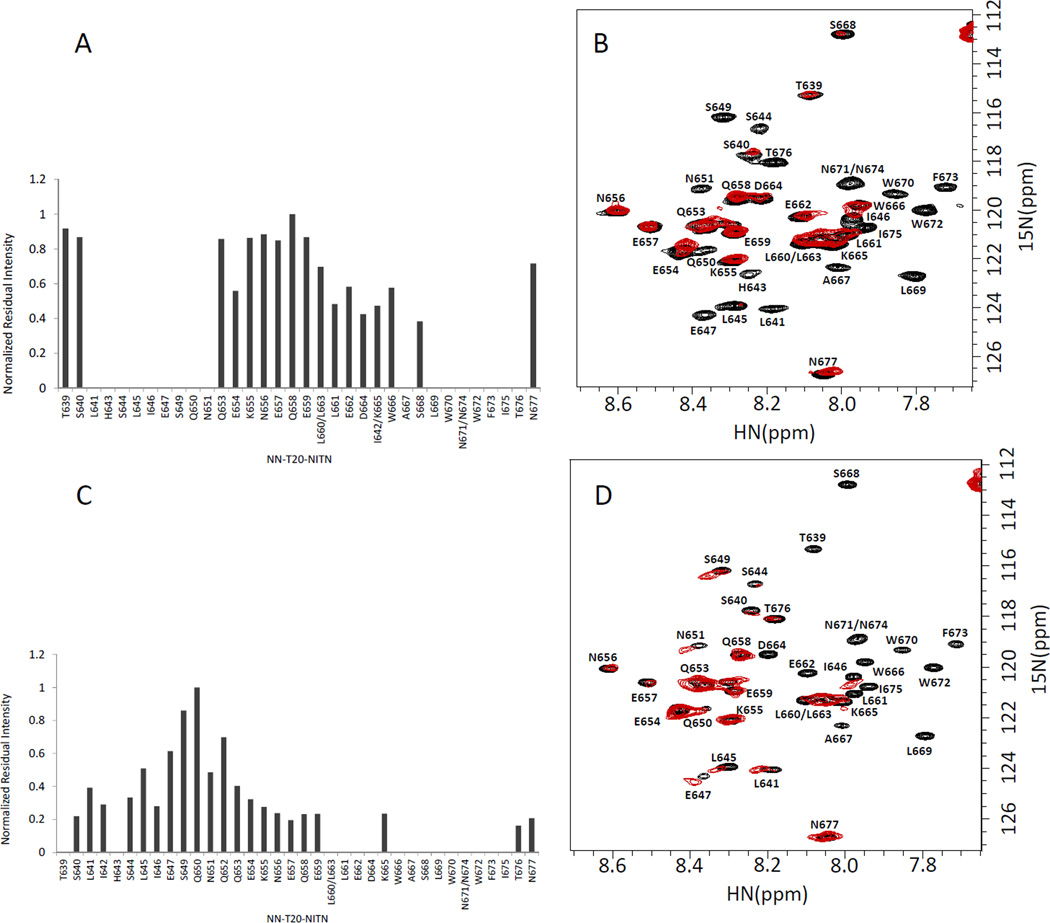Fig. 4.
Mapping the NN-T20-NITN segment interacting with a C4 peptide (sC4) and gp120. A. Normalized residual intensity for each residue in 15N-labeled NN-T20-NITN upon addition of a 1:1 molar ratio of sC4 at 42 µM. B. An overlay of the 1H-15N-HSQC spectrum of 15N-labeled NN-T20-NITN in the presence of 1:1 molar ratio of the C4 peptide sC4 (red) and the spectrum of the free NN-T20-NITN (black). C. Normalized residual intensity for each residue in 15N-labeled NN-T20-NITN upon addition of a 1:0.5 molar ratio of mutgp120core (+V3)/CD4M33 at 44 µM. D. An overlay of the 1H-15N-HSQC spectrum of 15N-labeled NN-T20-NITN in the presence of 1:0.5 molar ratio of mutgp120core (+V3)/CD4M33 (red) and the spectrum of free NN-T20-NITN (black). The normalized intensity was calculated by dividing the intensity of a specific 1H-15N cross peak of NN-T20-NITN in the presence of sC4 or mutgp120core (+V3)/CD4M33 by the intensity of the same residue in the spectrum of free NN-T20-NITN and then all of the relative intensities were normalized to the residue that exhibited the highest ratio. The measurements were done in 20 mM D11-Tris-HCL at pH 7, 288 K.

